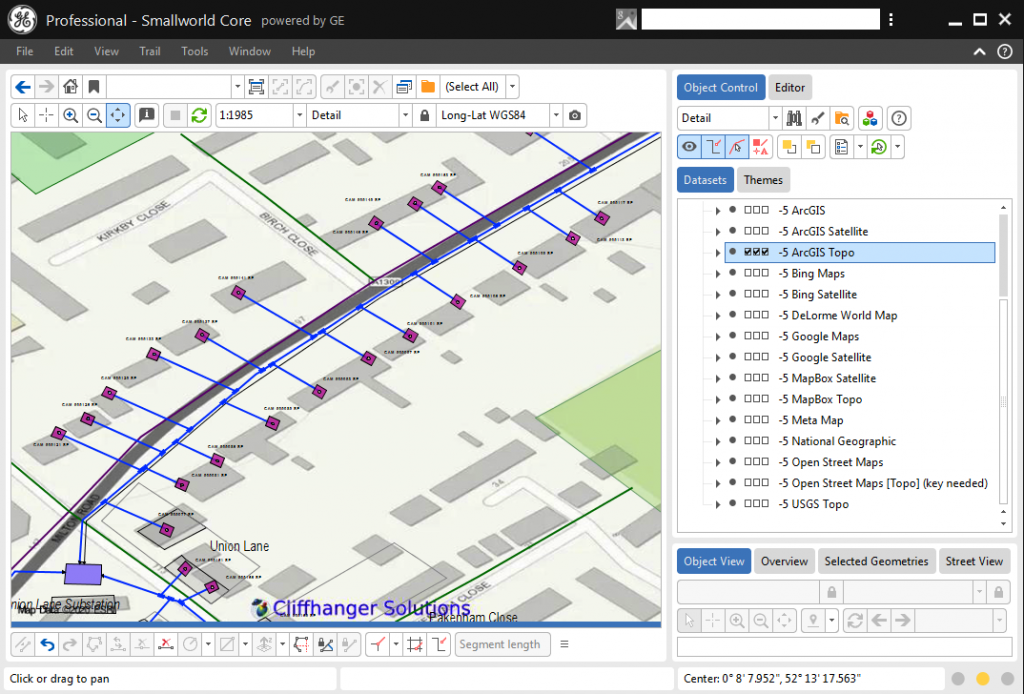


There is a ArcGIS for Personal Use Program | ArcGIS for Desktop Advanced for Personal Use where you have access to a great part of the ArcGIS platform for a mere $100 per year. (Licenses are way too expensive for hobbyists, casual users, or open-source geeks!) Keeping your ArcGIS skills fresh while actually using a different platform is difficult with the current ESRI offerings. And I was surprised how much COM is still involved. I returned to the ArcGIS fold only recently, having left it at version 9.3, and playing catch-up is a full-time job in itself. The pace of architectural change ArcGIS has gone through in recent years is daunting, and especially now, given the new network, new versioning, new data service and container architectures, new APIs, 3D, and new. And integrating open datasets available from ESRI and other sources with whatever GIS platform you end up on is a necessity to keep your skills current. (Licenses are way too expensive for hobbyists, casual users, or open-source geeks!) At minimum you need to keep a current ArcGIS Online subscription if you ever think you will move back to an ArcGIS shop. Keeping your ArcGIS skills fresh while actually using a different platform is difficult with the current ESRI offerings. Since I left the Intergraph and Smallworld arenas to join the ArcGIS juggernaut, it appears Smallworld has added some java interfaces to attract more mainstream developers and has tried to plant itself firmly as a large-enterprise, big-data-center solution. Made a lot of consultants rich back in the day. Utility networks are something that ESRI has only recently begun to address within its core products, delegating most utility-oriented functionality to 3rd party partners until now. Many of the "GIS" capabilities are similar, but the value-added is specifically for utility networks and GE has a long and successful track record in that space. Since Duke *is* a utility, Smallworld is a quite a good solution for that problem domain. Shows the good marketing efforts of ArcFM I guess. I never understood how ESRI gained any traction in the utility space. The data model was robust (many geometry properties allowed in one object!), the network actually worked, and so did versioning, and Magik seemed like a simplified javascript syntax before javascript got formal packages and requires. Similar ideas map easily, for example, versioning, geometry, rendering etc. There are a lot of analogs between all GISes, given the common underlying problems with geospatial data storage, manipulation, and representation. In the mid 2000s I had briefly switched from Intergraph to Smallworld (version 3.something) for a data conversion gig, and it was fairly straightforward to understand, especially if you have someone give you a tour.

Smallworld gis software plus#
O’Reilly members experience live online training, plus books, videos, and digital content from 200+ publishers.I know this is a dead thread, but I have a little experience in Smallworld arena. Get GIS For Dummies® now with O’Reilly online learning. Product line: The primary ESRI product is ArcGIS (shown in Figure.
Smallworld gis software software#
Although their products have a steep learning curve, the power this software provides is worth the time investment: Most GIS users are more than happy to talk about their experiences.Įnvironmental Systems Research Institute (ESRI, at boasts the largest market share for GIS and has come by that boast honestly. For an updated, comprehensive list of GIS vendors, see Each of the vendors listed in this chapter has a loyal client base, so it doesn’t hurt to ask folks who use each company for guidance when you’re choosing the company that’s right for you. With the list of GIS software vendors tipping the scales at “a whole lot” and growing, you may find having a list of ten well-known vendors helpful. These vendors range from companies that specialize in industry-specific software (such as Surfer for terrain analysis and CrimeStat for crime analysis), to more generic software companies (such as Environmental Systems Research Institute, Intergraph, and GE Smallworld). GIS software vendors are as varied as the data you encounter inside the software.


 0 kommentar(er)
0 kommentar(er)
